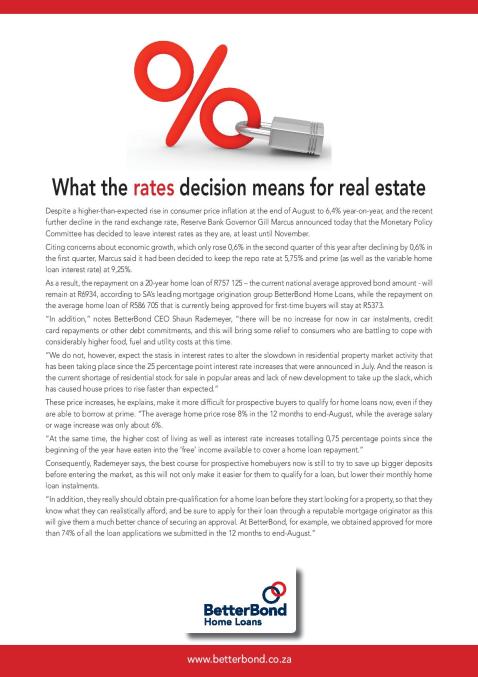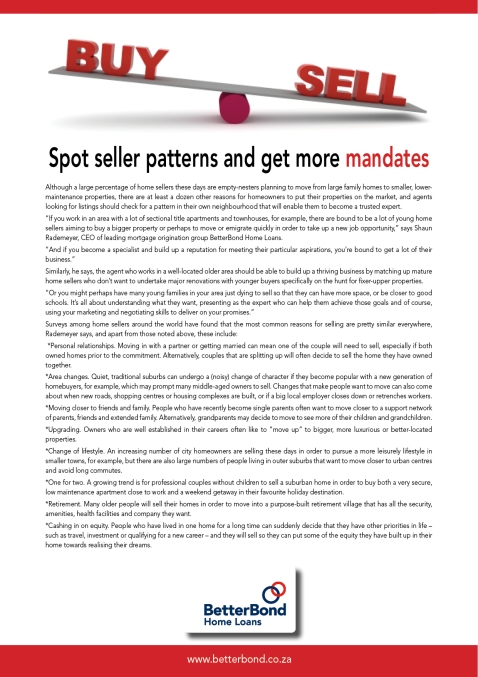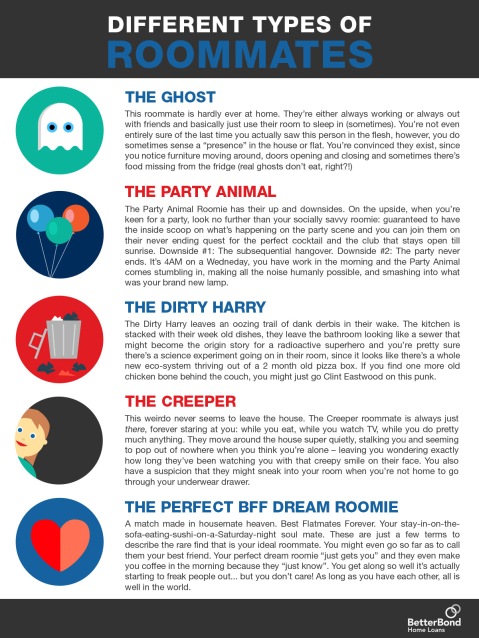Real estate scams to be wary of
Unfortunately, the property market is no stranger to real estate fraud and investment scams. Criminals have become exceptionally capable of swindling considerable amounts of money out of prospective property buyers / renters and investors, thanks to the advancement of technology. Because society has become so dependent on technology, they open themselves up to exploitation by these nefarious racketeers.
Perhaps most frightening is that illicit property dealings are not limited to just one entity – these marauders include elaborate property syndication schemes, beguiling property attorneys, cunning real estate agents and elusive contractors. Therefore, it is important that you remain vigilant and are aware of the convoluted surfeit of property scams festering within the world of real estate.
Title Fraud
Despite being relatively uncommon, title fraud is a particularly malignant form of property extortion. The fraudster begins by stealing the identity of an individual and then proceeds to illegally procure property by using forged documents and posing as that individual. A property is then transferred into his or her name after the forged documents have been registered, after which a mortgage bond is taken out against the newly acquired property. Once the line of credit or mortgage has been obtained, the fraudster disappears, leaving the duped owner responsible for future payments.
Property swindlers are more inclined to target homes that are free and clear of mortgages as they offer fewer complications. Homeowners who rent out their property and high value properties free of mortgages tend to be more vulnerable to title fraud as substantial mortgages can be taken out with them. However, homes with existing mortgages are not entirely safe from these fraudsters either. They have been known to get a forced discharge of an existing mortgage. There have also been cases of lawyers and notaries absconding after being trusted with funds meant to pay off an existing mortgage.
Title fraud can be avoided with ‘title insurance’. This type of insurance also guards against encroachment issues, faults in surveys and public records, as well as existing liens against a property’s title. Precautions should also be taken to protect your personal information from identity theft.
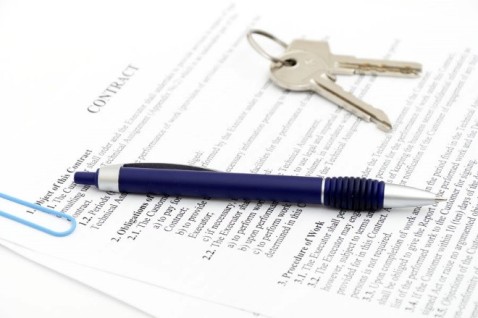
Vacant Home
The vacant home rental scam is one of the most common types of real estate fraud. A profusion of empty houses following the increase in recession-driven foreclosures has become a breeding ground for corrupt activity. Fraudsters take advantage of the plenitude of uninhabited homes by locating these homes and creating bogus online advertisements pretending to be a real estate agent or the owner of the property. They then break into the homes (often changing the locks so the landlords are unable to gain access) and show them to unsuspecting tenants. Once these tenants have agreed to rent out the home, the fraudster requests a wire or cash payment of the deposit and first month’s rent, after which they disappear into oblivion.
Fortunately, there are a number of red flags that can help property seekers identify charlatans and sham properties. Suspicious behaviour includes: ‘landlords’ who request a money wire; an attempt to solicit a deposit or rent before the lease has been signed or a meeting has taken place; and ‘landlords’ who claim that they are unable to meet for a particular reason (i.e. they are “out of the country”).
Vacant home rental scams can be avoided by checking the deed registry for the property owner’s name and requesting identification from the person showing the home. Doing a background check on the prospective landlord is also recommended before signing the lease.

Renting foreclosed property
The renting of foreclosed property or soon to be foreclosed property scam works in much the same way as the vacant home rental scam. Fraudsters find homes that have been foreclosed on or are soon to be foreclosed and show them to prospective tenants. A fake or temporary number is supplied and the keys to the property never handed over. After the fraudster has collected the deposit (sometimes from several prospective tenants at once) he or she disappears, leaving a trail of victims duped out of their money and with no place to live.
Other types of foreclosure scams include: the phantom help; the bailout; and the bait-and-switch.
- The phantom help scam involves a ‘rescuer’ charging exorbitant fees for phone calls or admin that does not result in the home being saved from foreclosure. These fraudsters lull homeowners into a false sense of security and charge them for work that could have easily been carried out without their help.
- The bailout scam involves a fraudster deceiving the desperate homeowner into signing over the title of the home with the promise of undisturbed residence in the home and being able to buy it back over time. Unfortunately buying the property back becomes impossible, resulting in the homeowner losing possession and the scam artist maintaining equity.
- The bait-and-switch is a duplicitous scam that involves a fraudster tricking the homeowner into signing documents that surrender ownership instead of bringing the mortgage current. Often homeowners only realise they have been deceived when they are evicted.
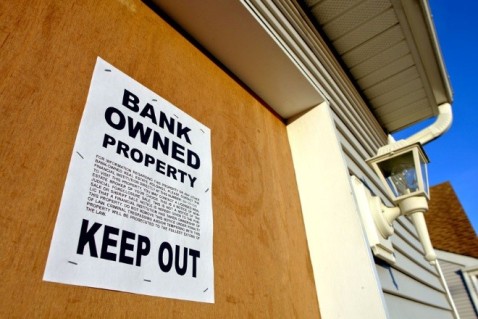
Fake property manager renting out home
Despite its seemingly simple approach, this type of scam is particularly intricate and devastating as it entails identity theft. Fraudsters find existing property listings by legitimate real estate agencies and alter the text of these listings before posting it on other websites (often free websites like Gumtree). Prospective tenants respond eagerly to these advertisements because the original price has been reduced drastically, thus appealing to resolute home seekers. The fraudster then claims that a cash deposit or application form is required to secure the property. Overwhelmed by desperate yearning, home seekers release their money or information to the imposter, thereby opening themselves up to identity theft. Before viewing arrangements can be made, the fraudster disappears.
When encountering properties that seem too good to be true you should contact the real estate agency and confirm the details of the listing and agent. It is also recommended that you do research about the area where the property is located and check the current average price range for rentals. If the situation seems veiled and the property manager requests a wire transfer or personal information, but is unable to meet for whatever reason, it should raise red flags.

Confronting a scam artist or fraudulent property can be an unnerving experience. However, if you are aware of common real estate scams and know how to identify them, you could save yourself from a potentially grievous situation and avoid being another victim of this lawlessness.
Image source: shutterstock.com
BetterRewards Dream Bigger, Live Better Lottery
Here at BetterBond, we believe in not simply thanking our loyal supporters, but taking things a step further by rewarding them too. The BetterRewards Dream Bigger, Live Better Lottery is our way of doing just that. The loyalty consistently shown by our developers, principals and agents is very much appreciated and that’s why we’ve decided to help them make their dreams come true. Read on to find out all you need to know about this fantastic rewards system.
How do I enter?
It’s really simple actually: Call 011 5165500 or contact a knowledgeable consultant at BetterBond who will assist you in becoming a BetterRewards Member. You will then receive a unique password which you will use, in conjunction with you South African ID number, to log in into the lottery. You can then start submitting!
What can I win?
Each month, you stand the chance of winning your share of R100 000, which will go towards turning your biggest dream into reality. Winners are chosen via a lucky draw, but there are also many rewards in multiple categories up for grabs designed to suit your everyday needs.
BetterRewards App
We live in a technological age and BetterBond strives to move with the times. That’s where the BetterRewards App comes in. Members are able to log in using the same credentials they would use when logging in through the web portal and can view their points balance, along with their BetterRewards MasterCard balance. It’s also a quick and easy way to redeem points. This app is all about making your life easier.
For Estate Agents
BetterRewards offers estate agents a special multi-tiered rewards programme whereby points are used as currency for each home loan that is secured and successfully submitted to BetterBond. The more bonds you secure, the higher up you move through the different tiers. Points earned can then be “burned” on everything from movie tickets to travel and airtime.
The BetterRewards Dream Bigger, Live Better Lottery is our way of saying thank you to those who continue to support us. Remember: the more dreams you submit, the greater your chances of winning. So, take the first step to making your dreams come true with BetterBond today.

Image source: clubbenefits.co.za
1.bp.blogspot.com
How To Live Harmoniously With Your House Mate(s)
The internet is rife with horror stories about house mates who indulge in wild nights of debaucherous behaviour only to leave a trail of filth and chaos in their midst… much to the horror of their fellow dwellers. While these can be rare occurrences followed by sincere apologies and promises to be better in the future, there are sometimes those incessant situations that can wreak utter havoc, thrusting the household into a pit of hostility and resentment, and possibly destroying previously sturdy friendships.

However, there are ways to avoid descending into this chasm of bitter loathing and ensure you and your house mate(s) live together harmoniously.
Maintain clean communal areas
When it comes to your bedroom it can be a squalid wreckage of grimy dishes, dog eared novellas and dirty laundry, but communal areas like the living room, kitchen and bathroom should be kept clean and tidy. By cleaning up after yourself and assigning different chores to each person, a level of cleanliness can be maintained with nobody being forced to clean up someone else’s mess. Cleaning is generally the biggest source of conflict in communal living areas so cleaning should be a priority for everyone.

Be considerate
While many people choose to share a house with other people because of the social aspect, it is important to remember that there are certain boundaries even when you are sharing a home with your best friends. Be courteous when your house mates are sleeping or studying by avoiding any disruptive behaviour or noise (i.e. loud music and boisterous conversation). Being considerate also extends to respecting their space and privacy (i.e. knock before entering their bedroom), asking before borrowing things and being mindful of overnight guests.

Fulfill your promises and responsibilities
If you have been allocated a particular chore such as vacuuming or taking care of the monthly internet bills, ensure these are fulfilled consistently and on time. Forgetting about water or internet payments and having these services discontinued, will only stir up unnecessary animosity amongst your house mates.

Spend time together
Living with people can be a volatile affair and although you may find yourself on tenterhooks every so often, this should not dissuade you from embracing the social aspect of living with people. Spend time together and enjoy each other’s company – this will help with communication and general comradery.

Although living with people is a serious undertaking, it is not a marriage complete with prenuptial agreements and mortgage bonds. Sharing a home with people should be an enjoyable experience, so try not to focus on trivial issues such as toilet paper politics and rather embrace this exciting chapter in your life.
Image source: shutterstock.com
Prime Ministers’ Residences Around the World
Being named Prime Minister of a country comes with many responsibilities and expectations, but aside from the all-important aspects, there are also many perks that come with the job. Chauffeur-driven cars and private planes are just a few of the finer things that a Prime Minister gets to enjoy, but the icing on the cake has to be the grand residence that he or she gets to call home during their term, and with no home loans to worry about or grounds maintenance to attend to, it’s the ultimate set-up. Take a closer look at some of the incredible Prime Ministers’ homes around the world.
Vale Royal (Jamaica)
Vale Royal is one of the oldest residences in Kingston and is where the current Prime Minister, Portia Simpson Miller, lives. It was built by planter Sir Simon Taylor back in 1694 as was known then as “Prospect Pen”. When the residence was bought by the government in 1928, the home was used to accommodate British Colonial secretaries for many years. It has undergone two refurbishments: one in 1962 and one in 1980. Despite these refurbishments, the Minister of Finance in 1962 refused to move in as he felt it was too small for his needs. The defining feature of the home has to be the lookout tower on the roof that provides views of the Kingston harbour. Vale Royal is not open to the public.
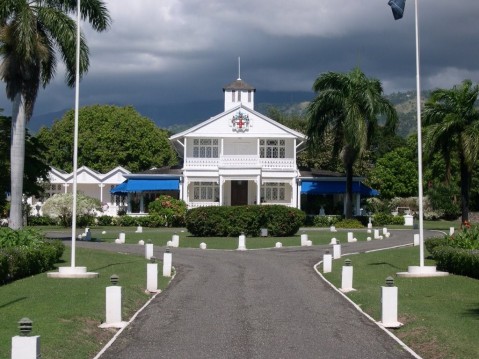
Image source: static.panoramio.com
24 Sussex Drive (Canada)
The official residence of the Prime Minister of Canada, 24 Sussex Drive is located in New Edinburgh in Ottawa. It was commissioned to be built by Member of Parliament, Joseph Merrill Currier, between 1866 and 1868 as a wedding gift for his future wife. It is one of two official residences, the other being Harrington Lake estate. It has been the official home of Prime Ministers since 1951, after undergoing refurbishment the previous year. The beautiful limestone home boasts 34 rooms spread across four floors and is nestled on the south bank of the Ottawa River. Compared to other state residences, 24 Sussex Drive is almost exclusively a residence, with most of the Prime Minister’s work being carried out at a separate office.
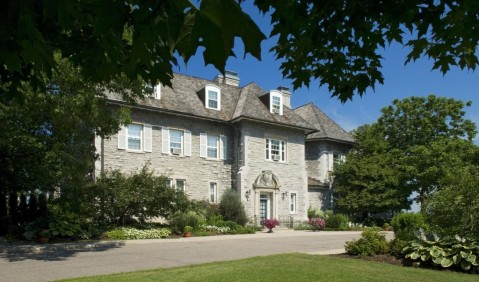
Image source: ncc-ccn.gc.ca
10 Downing Street (United Kingdom)
10 Downing Street, commonly referred to by locals as “Number 10”, is the Headquarters of the British government, and the official home of the Prime Minister, currently David Cameron. Located in the City of Westminster, the famous address is over 300 years old and offers 100 bedrooms. Originally, the residence was three separate buildings which were eventually joined to make one home by William Kent in 1735. The Georgian-style door was originally made from black oak and was designed to be opened from the inside only, whilst the black and white tiled entrance hall is in its original state. There is also a gorgeous back terrace that provides incredible views of St James Park. The artwork displayed at 10 Downing Street is continually changing and the pieces found here are usually on loan from private collectors and public galleries such as the Tate.

Image source: upload.wikimedia.org
7 Race Course Road (India)
Consisting of five bungalows and stretching across 12 acres of land, 7 Race Course Road has been home to the country’s Prime Minister since 1984. The first Prime Minister to move into the complex, known as Panchavati, was Rajiv Gandhi who lived there with his family. The bungalows were originally designed by Robert Torr Russell, who formed part of the British architecture team making design changes in New Delhi in the 20s and 30s. The 15th Prime Minister of India, Narendra Modi, currently resides at 7 Race Course Road.

Image source: tribuneindia.com
Palazzo Chigi (Italy)
Palazzo Chigi is the palace or noble residence of the Prime Minister of the Italian Republic. It’s located in the city of Rome and the current Prime Minster, Matteo Renzi, has lived there since February 2014. This epic residence was built sometime between 1562 and 1580 and became the official residence in 1961. It overlooks the Piazza Colonna, has five floors, a broad, impressive stairway and a fountain in the courtyard that has replicas throughout Rome and other Italian cities.
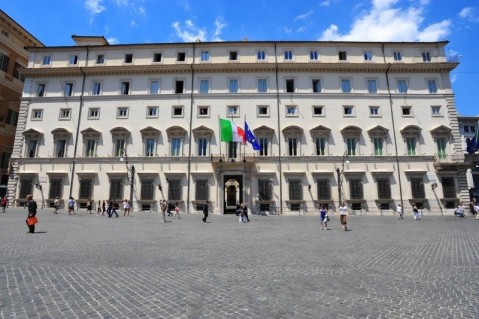
Image source: giornalettismo.com
